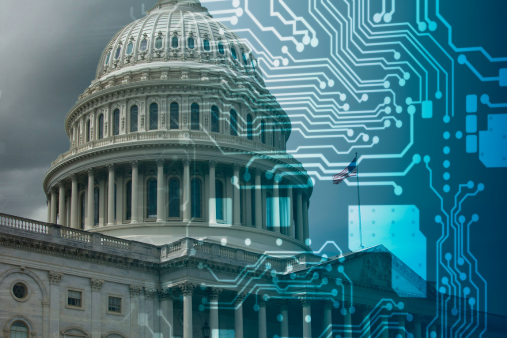In late 2011, Judge Jed Rakoff sent shockwaves through the securities enforcement bar and the SEC when he refused to approve the Commission’s settlement with Citigroup Global Markets in a settled action arising from Citigroup’s packaging and sale of residential mortgage backed securities in the early days of the financial meltdown. In a scathing decision, Judge Rakoff called the SEC’s settlement with Citigroup “worse than mindless” and “inherently dangerous” because the consent agreement included the SEC’s then-typical “no admit, no deny” provision, allowing Citigroup to pay about $285 million in disgorgement and penalties, without actually admitting it did anything wrong. Wednesday, in a much-anticipated and long-delayed decision, the Second Circuit reversed Judge Rakoff. When Judge Rakoff issued his decision, he was troubled by several aspects of the Commission’s deal with Citigroup. First, he questioned why the SEC charged Citigroup with only negligence when it simultaneously charged its employee with fraud with respect to the same facts. Second, while the Court acknowledged that the settlement was good for Citigroup, he questioned how the public benefitted. Judge Rakoff said he felt duty-bound to determine whether the settlement agreement was “fair, reasonable, adequate and in the public interest.” The Court concluded that he lacked the ability to make such assessments, particularly about the “in the public interest” requirement because there were no admitted or adjudicated facts before him upon which to do so. This was particularly troubling to him because the proposed consent judgment required him to exercise the Court’s injunctive powers. The Court concluded that exercising that authority without even a minimal understanding of the “facts” to determine the propriety of invoking such powers would “serve[] no lawful or moral purpose” and would simply turn the Court into an “engine of oppression.” Finally, according to Judge Rakoff, the SEC, more than most agencies, had a duty “to see that the truth emerges”; and when the agency failed to do that, the Court said it would not “grant judicial enforcement to the agency’s contrivances” in the name of “deference or convenience.” On appeal, however, the Second Circuit took a dim view of Judge Rakoff’s analysis. And though the Second Circuit’s outcome may not be too surprising because it had stayed Judge Rakoff’s order almost immediately based on the parties’ “strong likelihood of success on the merits,” the appellate court’s rationale will likely still surprise practitioners. The court began by quickly dispensing with the notion that there is any legal basis for the district court to require an admission of liability as a precondition for settlement. Even Judge Rakoff’s appellate counsel had not argued that was required nor did Judge Rakoff’s decision require that. According to the Second Circuit, requiring an admission of liability is entirely within the SEC’s discretion. The “thornier” issue for the appellate court was the amount of deference a district court owed an agency seeking a consent decree. The court concluded that Judge Rakoff employed too stringent a standard for reviewing a consent decree with an enforcement agency. Contrary to the “fair, reasonable, adequate, and in the public interest” standard Judge Rakoff used, the Second Circuit said that a district court merely needed to determine whether the decree is “fair and reasonable,” and that the “public interest would not be disserved” if the consent decree sought injunctive relief. The court framed this inquiry in the negative – so long as there was not a substantial basis in the record to conclude that these factors were not met, the district court is required to enter the order. The court expressly stated that the consent decree’s “adequacy” was not part of the equation. “Adequacy” might be necessary for a class action settlement, but the court concluded such an inquiry was “particularly inapt” when reviewing a proposed consent decree. The “fair and reasonable” inquiry seems limited to exclusively a procedural analysis, which should focus on factors like: (1) the basic legality of the decree; (2) whether its terms are clear; (3) whether it resolves the actual claims pleaded in the complaint; and (4) whether it is “tainted by improper collusion or corruption of some kind.” Excluded from this analysis was the “truth” of the allegations. It was an abuse of discretion to require the SEC to establish the “truth” of its allegations as a condition for approval. According to the court, “[t]rials are primarily about the truth. Consent decrees are primarily about pragmatism.” Consent decrees are a way to manage risk, both the party’s and the SEC’s, and about compromise. These issues are “uniquely for the litigants” to evaluate. “Cold, hard, solid facts” are not within the district court’s purview to require. The appellate court said that a district court does have to establish a factual basis for the proposed decree, but generally it can do so by reviewing the claim, supported by the factual averments of the SEC, without any admissions by the settling party. The court might, in some instances, need to inquire to satisfy itself that the consent decree is not the product of “improper collusion” between the parties; but the court strongly suggested that Judge Rakoff had had before him sufficient information to approve the Citigroup consent decree. As for satisfying the requirement that the public interest “not be disserved,” the job of making that determination “rests squarely with the SEC” and the agency’s decision “merits significant deference.” Again, “knowing the truth” is not part of that calculus. Furthermore, the Second Circuit stated that “what the district court may not do is find the public interest disserved based on its disagreement with the SEC’s decisions on discretionary matters of policy” like settling without an admission of liability. Nor can it withhold approval of the consent decree because it disagrees with the SEC’s charging decision or because the decree fails to assist private litigants by creating collateral estoppel. The Second Circuit also reminded the district court, and perhaps the agency, that the SEC remained free to resolve these issues in-house and “eschew the involvement of the courts” altogether. The decision must have caused a substantial sigh of relief at the agency, which has had some recent setbacks both at trial and on appeal. How the decision might impact pending and future SEC enforcement actions will be the subject of a future post.
Subscribe
Do you want to receive more valuable insights directly in your inbox? Visit our subscription center and let us know what you're interested in learning more about.
View Subscription Center










/Passle/6488d4630e7e25c9ac9f834a/SearchServiceImages/2024-11-14-13-11-27-495-6735f6fff42d6cc59c8ec5c1.jpg)
/Passle/6488d4630e7e25c9ac9f834a/SearchServiceImages/2024-11-11-22-02-38-042-67327efe31216b909e6ea644.jpg)
